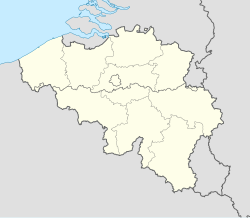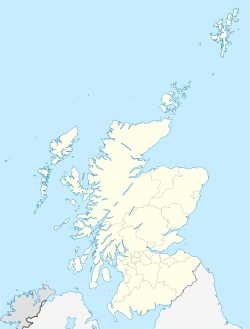Шаблон:Карта розташування/тести
Croatia{{Location map|Croatia
| label = Pag
| mark = <!--dot--> Green pog.svg
| lat_deg = 44
| lat_min = 26
| lon_deg = 15
| lon_min = 3
| position = right
| width = 300
| float = right
}}
Croatia 2{{Location map|Croatia
| label = Pag
| lat = 44.44
| long = 15.05
| position = right
| width = 200
| float = right
}}
Croatia 3{{Location map|Croatia
| label = Pag
| alt = Pag lies off the West coast of Croatia, in the Adriatic Sea
| mark = <!--dot-->Green pog.svg
| lat_deg = 44
| lat_min = 26
| lon_deg = 15
| lon_min = 3
| position = right
| width = 300
| float = right
}}
Croatia 4{{Location map|Croatia
| label = Imotski
| lat = 43.44
| long = 17.21
| position = right
| width = 300
| float = right
| background = #FFFFDD
| caption = Imotski on the map of Croatia
}}
Croatia 5{{Location map|Croatia
| label = Pag
| label_size = 200
| lat = 44.44
| long = 15.05
| position = right
| width = 300
| float = right
| background = #FFFFDD
| caption = Pag Island on the map of Croatia
}}
Bosnia{{Location map|Bosnia
| label = Brčko
| position = left
| width = 150
| lat = 44.87
| long = 18.81
| float = right
| caption =
}}
Scotland{{Location map|UK Scotland
| label = Lockerbie
| marksize = 9
| mark = Blue_pog.svg
| lat_dir = N
| lat_deg = 55
| lat_min = 7
| lat_sec = 16
| lon_dir = W
| lon_deg = 3
| lon_min = 21
| lon_sec = 19
| position = right
| width = 170
| float = right
| caption = Lockerbie in Scotland
}}
Scotland relief{{Location map|UK Scotland
| lat_deg = 55 | lat_min = 07 | lat_sec = 16 | lat_dir = N
| lon_deg = 03 | lon_min = 21 | lon_sec = 19 | lon_dir = W
| label = Lockerbie
| position = right
| mark = Blue_pog.svg
| marksize = 9
| width = 200
| relief = yes
| float = right
| caption = Lockerbie in Scotland
| alt = Lockerbie is in southern Scotland.
}}
Russia{{Location map|Russia
| label = Uelen
| marksize = 7
| mark = Locator_Dot.png
| lat_deg = 66
| lat_min = 09
| lon_deg = 169
| lon_min = 48
| lon_dir = W
| position = left
| width = 500
| float = left
| background = yellow
}}
BelgiumFloat leftПомилка Lua у Модуль:Location_map/пісочниця1 у рядку 323: attempt to perform arithmetic on local 'right' (a string value). Walraversijde was discovered on the Belgian coast by the archeologist Marnix Pieters in 1992 in a dune area, near a medieval dyke. Prior to discovery, Walraversijde was a lost village, with no obvious remains above ground. Two related sites were excavated, one on a beach and the other on a polder. The beach site was inhabited between 1200 and 1400, and the polder site was inhabited between 1400 and 1630. The excavations also found evidence of activities during the Roman era, such as a Roman dyke. Walraversijde played a role during the Siege of Ostend of 1601-1604, when a Spanish cavalry camp operated from the site. The artefacts and remains are well preserved, and there have been many finds. The sites have been excavated systematically and thoroughly, and have produced unusually rich findings. Image thumb float left  Walraversijde was discovered on the Belgian coast by the archeologist Marnix Pieters in 1992 in a dune area, near a medieval dyke. Prior to discovery, Walraversijde was a lost village, with no obvious remains above ground. Two related sites were excavated, one on a beach and the other on a polder. The beach site was inhabited between 1200 and 1400, and the polder site was inhabited between 1400 and 1630. The excavations also found evidence of activities during the Roman era, such as a Roman dyke. Walraversijde played a role during the Siege of Ostend of 1601-1604, when a Spanish cavalry camp operated from the site. The artefacts and remains are well preserved, and there have been many finds. The sites have been excavated systematically and thoroughly, and have produced unusually rich findings. Float centerПомилка Lua у Модуль:Location_map/пісочниця1 у рядку 323: attempt to perform arithmetic on local 'right' (a string value). Walraversijde was discovered on the Belgian coast by the archeologist Marnix Pieters in 1992 in a dune area, near a medieval dyke. Prior to discovery, Walraversijde was a lost village, with no obvious remains above ground. Two related sites were excavated, one on a beach and the other on a polder. The beach site was inhabited between 1200 and 1400, and the polder site was inhabited between 1400 and 1630. The excavations also found evidence of activities during the Roman era, such as a Roman dyke. Walraversijde played a role during the Siege of Ostend of 1601-1604, when a Spanish cavalry camp operated from the site. The artefacts and remains are well preserved, and there have been many finds. The sites have been excavated systematically and thoroughly, and have produced unusually rich findings. Image thumb float center  Walraversijde was discovered on the Belgian coast by the archeologist Marnix Pieters in 1992 in a dune area, near a medieval dyke. Prior to discovery, Walraversijde was a lost village, with no obvious remains above ground. Two related sites were excavated, one on a beach and the other on a polder. The beach site was inhabited between 1200 and 1400, and the polder site was inhabited between 1400 and 1630. The excavations also found evidence of activities during the Roman era, such as a Roman dyke. Walraversijde played a role during the Siege of Ostend of 1601-1604, when a Spanish cavalry camp operated from the site. The artefacts and remains are well preserved, and there have been many finds. The sites have been excavated systematically and thoroughly, and have produced unusually rich findings. Float rightПомилка Lua у Модуль:Location_map/пісочниця1 у рядку 323: attempt to perform arithmetic on local 'right' (a string value). Walraversijde was discovered on the Belgian coast by the archeologist Marnix Pieters in 1992 in a dune area, near a medieval dyke. Prior to discovery, Walraversijde was a lost village, with no obvious remains above ground. Two related sites were excavated, one on a beach and the other on a polder. The beach site was inhabited between 1200 and 1400, and the polder site was inhabited between 1400 and 1630. The excavations also found evidence of activities during the Roman era, such as a Roman dyke. Walraversijde played a role during the Siege of Ostend of 1601-1604, when a Spanish cavalry camp operated from the site. The artefacts and remains are well preserved, and there have been many finds. The sites have been excavated systematically and thoroughly, and have produced unusually rich findings. Image thumb float right  Walraversijde was discovered on the Belgian coast by the archeologist Marnix Pieters in 1992 in a dune area, near a medieval dyke. Prior to discovery, Walraversijde was a lost village, with no obvious remains above ground. Two related sites were excavated, one on a beach and the other on a polder. The beach site was inhabited between 1200 and 1400, and the polder site was inhabited between 1400 and 1630. The excavations also found evidence of activities during the Roman era, such as a Roman dyke. Walraversijde played a role during the Siege of Ostend of 1601-1604, when a Spanish cavalry camp operated from the site. The artefacts and remains are well preserved, and there have been many finds. The sites have been excavated systematically and thoroughly, and have produced unusually rich findings. Exercise floatSandbox
Lockerbie in Scotland
Lockerbie in Scotland
Lockerbie in Scotland
Lockerbie in Scotland Live
Lockerbie in Scotland
Lockerbie in Scotland
Lockerbie in Scotland
Lockerbie in Scotland |
Portal di Ensiklopedia Dunia


















